Cuphea P. Browne
cigar plant
Lythraceae
Ammannia, Clinopodium, Lindernia, Rotala
tropical and subtropical Americas
(plus numerous species cultivated as amphibiousamphibious:
(adj) of a plant able to live on land or in water
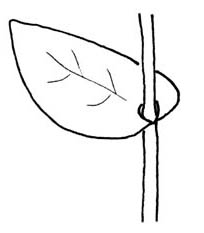 garden ornamentals)
garden ornamentals)
Cuphea anagalloidea A.St.-Hil. (the only species cultivated for aquaria)
the genus is found in tropical regions worldwide
Cuphea carthagenensis (Jacq.) J.F.Macbr. (a wetland species) can be weedy, but the extent of the impact is not well known.
amphibiousamphibious:
(adj) of a plant able to live on land or in water
 , emergentemergent:
, emergentemergent:
(adj) (syn. emersed) with parts raised out of the water; extending up out of the water
 and floating, or artificially submergedsubmerged:
and floating, or artificially submergedsubmerged:
(adj) (syn. submersed) under water; submerged below the water surface
 small herb
small herb
Annual or perennialperennial:
(adj) (of a plant) having a life cycle of more than two years
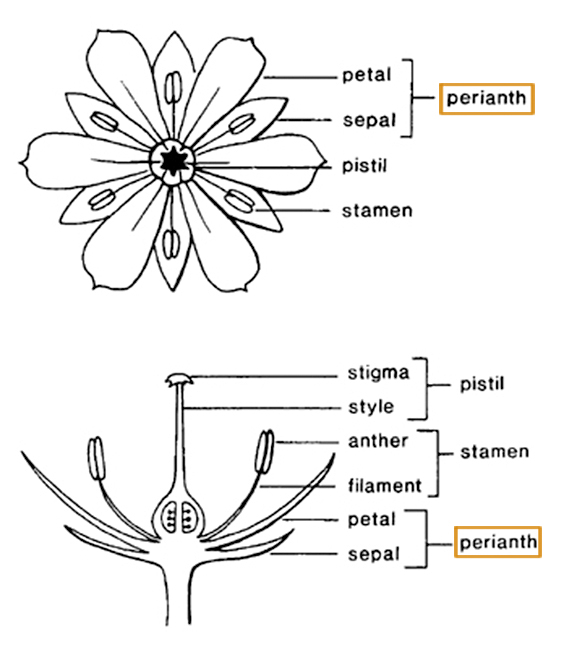 . Leaves oppositeopposite:
. Leaves oppositeopposite:
(adj) (of leaves) two leaves per node; in pairs on opposite sides of an axis
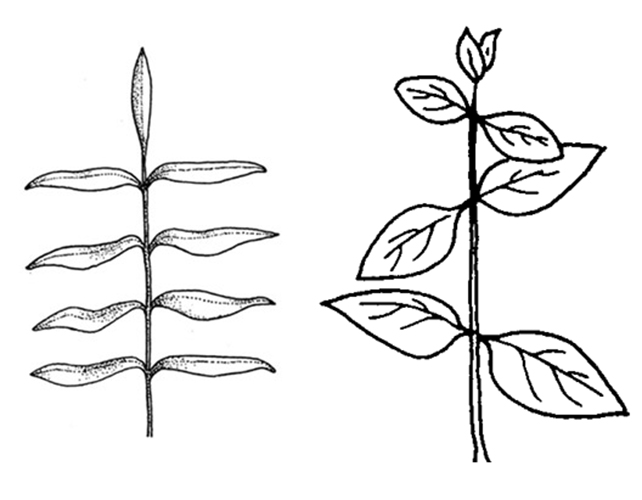 , whorledwhorled:
, whorledwhorled:
(n) bearing whorls; a type of leaf arrangement (phyllotaxis) in which leaves are in whorls
 or rarely al ternateternate:
or rarely al ternateternate:
(adj) in threes
 ; leaf bladeblade:
; leaf bladeblade:
(n) (syn. lamina) the flat, expanded part of a leaf, frond, or petal (excluding, e.g., the petiole)
 lanceolatelanceolate:
lanceolatelanceolate:
(adj) lance-shaped; widest point below the middle, tapering to the apex
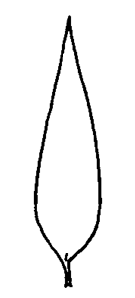 , ellipticelliptical:
, ellipticelliptical:
(adj) in the form of an ellipse (oval)
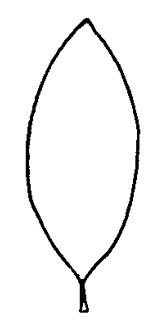 - ovateovate:
- ovateovate:
(adj) egg-shaped in outline; generally with the broad end at or near the base
 ; apexapex:
; apexapex:
(n) the point farthest from the point of attachment; the tip (often pointed)
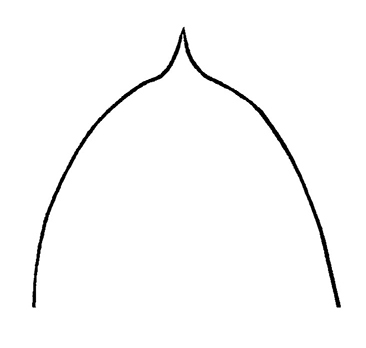 acuteacute:
acuteacute:
(adj) tapering to a sharp, pointed apex with more or less straight sides; broader than acuminate; forming an angle of less than 90 degrees
 ; base attenuateattenuate:
; base attenuateattenuate:
(adj) narrowing gradually to a point
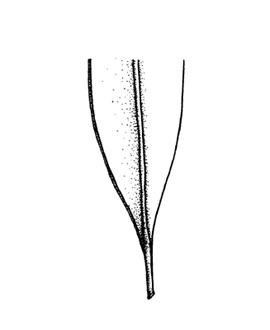 ; margins entireentire:
; margins entireentire:
(adj) having a continuous margin that is not toothed or lobed
 ; venationvenation:
; venationvenation:
(n) the arrangement of veins in a leaf
 pinnatepinnate:
pinnatepinnate:
(adj) in the form of a feather; of, e.g., leaflets, lobes, or veins: arranged in two rows along an axis
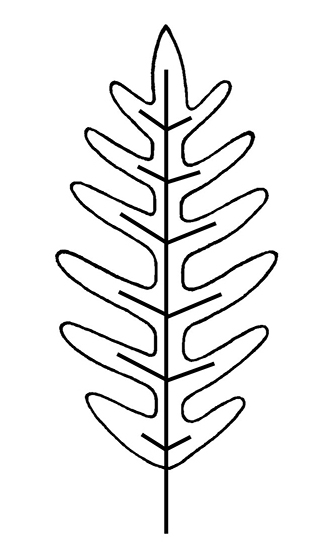 ; pink to red when submergedsubmerged:
; pink to red when submergedsubmerged:
(adj) (syn. submersed) under water; submerged below the water surface
 . Flowers solitary, or in clusters or racemes. Calyxcalyx:
. Flowers solitary, or in clusters or racemes. Calyxcalyx:
(n) the outer whorl of the perianth; all the sepals of a flower
 tube cylindricalcylindrical:
tube cylindricalcylindrical:
(adj) forming a nearly true cylinder
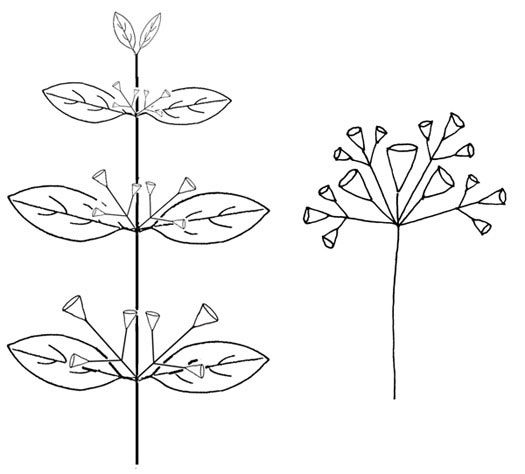 , elongated, spurred at the base; sepalsepal:
, elongated, spurred at the base; sepalsepal:
(n) a member of the outer envelope of a flower (calyx)
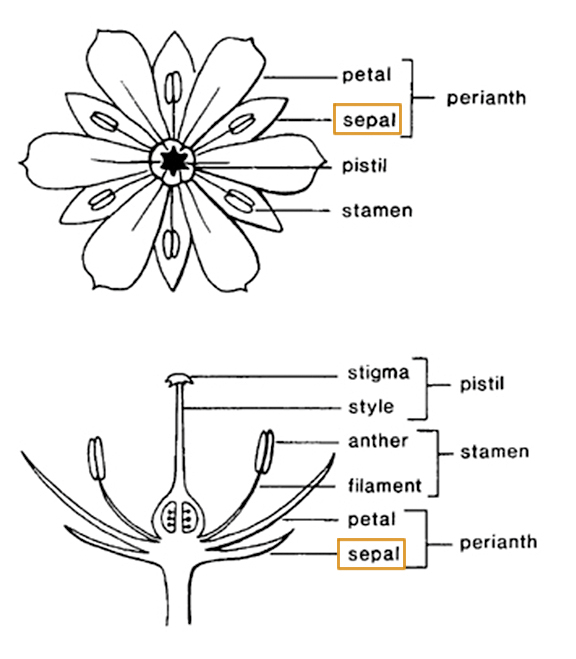 lobes usually 6. Petals 6, pink - red, sometimes caducouscaducous:
lobes usually 6. Petals 6, pink - red, sometimes caducouscaducous:
(adj) falling off easily or at an early stage
 . Stamens 11, rarely fewer.
. Stamens 11, rarely fewer.
some mesophyticmesophytic:
(adj) growing in an environment with a moderate amount of water
 , most in wetlands with a high propensity for moist to aquatic habitats
, most in wetlands with a high propensity for moist to aquatic habitats
Cuphea is the largest genus in Lythraceae, with nearly 300 species. The majority of Cuphea species are found in wetlands, but only a few are truly aquatic. The first to be cultivated in aquaria was C. anagalloidea, which had the misapplied names Bacopa sp. 'Red' or Rotala sp. 'Araguaia'. Most individuals of Cuphea anagalloidea sold are typically misidentified as species of Rotala or Lindernia.